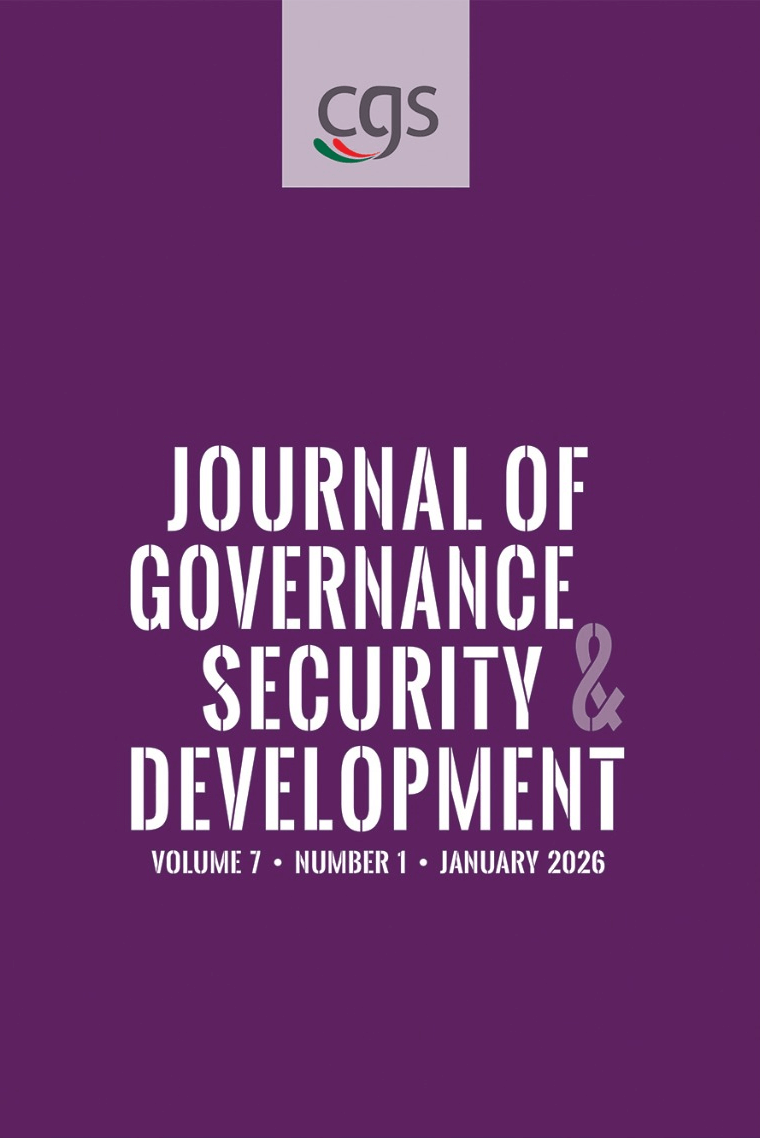Journal Reference
Volume 7 | Number 1 | Online Early Version
Online Version: ISSN No: 2708-2490
Print Version: ISSN No: 2709-0590
Price: BDT: 750.00, USD: 25.00
Publish Date: 14, October 2025
Article:
Shakila Akter and Sadia Khanom
Reference
Amin, M. S., Rahman, M. S., &Halimuzzaman, M. (2024). Reasons for high dropout rate in primary education in a school of Dhaka city during COVID-19 pandemic: A case study. International Journal of Science and Research Archive, 13(1), 3282–3293. https://doi.org/10.30574/ijsra.2024.13.1.2049
Ansarey, D. (2016). Dropouts at the tertiary level in Bangladesh: A case study in ASA university. In Journal of Science and Technology (Vol. 6, Issue 2).
Asadullah, M. N., & Chaudhury, N. (2015). The effect of education on fertility: Evidence from Bangladesh. Demographic Research, 33, 1257–1288. https://doi.org/10.4054/DemRes.2015.33.43
Astin, A. W. (1984). Student involvement: A developmental theory for higher education. Journal of College Student Personnel, 25(4), 297–308.
Astin, A. W. (1999). Student involvement: A developmental theory for higher education. Journal of College Student Development, 40(5), 518–529.
Bangladesh Bureau of Statistics. (2022, July 7). Bangladesh Education Statistics 2022. Bangladesh Bureau of Statistics.
http://nsds.bbs.gov.bd/en/posts/95/Preliminary%20Report%20on%20Population%20and%20Housing%20Census%202022
Battin-Pearson, S., Newcomb, M.D., Abbott, R.D., Hill, K.G., Catalano, R.F. and Hawkins, J.D. (2000). Predictors of early high school dropout: A test of five theories. Journal of Educational Psychology, 92, 568-582.
Bean, J. P., & Metzner, B. S. (1985). A conceptual model of nontraditional undergraduate student attrition. Review of Educational Research, 55(4), 485–540.
Bourdieu, P. (1986). The forms of capital. In J. G. Richardson (Ed.), Handbook of theory and research for the sociology of education (pp. 241–258). Greenwood.
Braxton, J. M., Hirschy, A. S., & McClendon, S. A. (2004). Understanding and reducing college student departure. ASHE-ERIC Higher Education Report, 30(3). Jossey-Bass.
Duncan, G. J., & Brooks-Gunn, J. (Eds.). (1997). Consequences of growing up poor. New York, NY: Russell Sage Foundation.
Ehsan, S. M. A., & Khanom, S. (2025). Beyond recognition: Job market access for Qawmi Madrasah students in Bangladesh. Journal of Governance Security & Development, 6(1), 1–21. https://doi.org/10.52823/MFWY6040
Farah, N., & Upadhyay, M. P. (2017). How are school dropouts related to household characteristics? Analysis of survey data from Bangladesh. Cogent Economics & Finance, 5(1), Article 1268746. https://doi.org/10.1080/23322039.2016.1268746
Hasan, M. T. (2024). Delving deep into dropout rates. Youth Wave. https://youthwavebd.com/2024/04/delving-deep-into-dropout-rates-md-tareq-hasan/
Hossain, M. I., & Mia, M. (2017). Dropout causes in secondary schools: A study in northern Bangladesh. Asian Education and Development Studies, 6(3), 256–268. https://doi.org/10.1108/AEDS-03-2017-0031
Hossen, S. H., Hira, A. A., & Mohsin, K. F. (2018). Factors responsible for students’ dropout at secondary education among slum children: A study on Khulna city of Bangladesh. Int J Adv Res, 6(5), 542-552.
Islam, M. N., & Pavel, T. (n.d.). Factors Contributing Towards Dropouts at Undergraduate Level: An Analysis (Vol. 5, Issue 1).
Jeffreys, M. R. (2012). Nursing student retention: Understanding the process and making a difference. Springer Publishing Company.
Kember, D. (1995). Open learning courses for adults: A model of student progress. Educational Technology Publications.
Khanom, S., & Islam, M. S. (2024). What matters in determining students’ preference for private universities over public universities in Bangladesh. Indian Journal of Applied Social Science, 1(1-2), 21–39. http://www.arfjournals.com/ijass
Khurram, F., Hossain, M., Korobi, F., Khan, M., Talukder, M., Nath, C., & Talukder, A. (2023). Understanding school dropout and its impact on the community in the Khulna region of Bangladesh. Open Journal of Social Sciences, 11, 582–596. https://doi.org/10.4236/jss.2023.1111038
Kuh, G. D. (2009). What student affairs professionals need to know about student engagement. Journal of College Student Development, 50(6), 683–706.
Lareau, A., & Weininger, E. B. (2003). Cultural capital in educational research: A critical assessment. Theory and Society, 32(5–6), 567–606. https://doi.org/10.1023/B:RYSO.0000004951.04408.b0
Latif A, Choudhary A. I., Hammayun A. A. (2015) Economic Effects of Student Dropouts: A Comparative Study. Journal of Global Economics. Retrieved from doi:10.4172/2375-4389.1000137
Metzner, B. S., & Bean, J. P. (1987). The estimation of a conceptual model of nontraditional undergraduate student attrition. Research in Higher Education, 27(1), 15–38. https://doi.org/10.1007/BF00992303
Milon, M. R. K., Hossain M. R., & Alam M. R. (2018). Factors Influencing on Dropouts at Undergraduate Level in Private Universities of Bangladesh: A Case Study. Australasian Journal of Business, Social Science and Information Technology.
Murshed, R., & Naher, F. (2023). Which University Students are Falling Behind? Evidence from Bangladesh. International Journal of Educational Reform, 32(1), 75-101.
Pascarella, E. T., &Terenzini, P. T. (2005). How college affects students: A third decade of research (Vol. 2). Jossey-Bass.
Rahman, M. A. (2021). Factors leading to secondary school dropout in bangladesh: The challenges to meet the SDG’S targets. Journal of the Asiatic Society of Bangladesh, Science, 47(2), 173-190.
Rahman, M. S., & Hossain, M. A. (2023). Dropout prediction of university students in Bangladesh using machine learning techniques. International Journal of Educational Technology in Higher Education, 20(1), 1–15. https://doi.org/10.1186/s41239-023-00368-2
Reay, D. (2004). “It’s all becoming a habitus”: Beyond the habitual use of habitus in educational research. British Journal of Sociology of Education, 25(4), 431–444. https://doi.org/10.1080/0142569042000236934
Redfern, C., & Ahsan, A. (2022). Tens of Thousands of Boys in Bangladesh Were Forced into Work During the Pandemic. Now School Is Resuming Without Them. Time, April, 26.
Roderick, M. (1993). The path to dropping out: Evidence for intervention. Westport, CT: Auburn House.
Sarker, M. N. I., Wu, M., &Hossin, M. A. (2019). Economic effect of school dropout in Bangladesh. International Journal of Information and Education Technology, 9(2), 147–151. https://doi.org/10.18178/ijiet.2019.9.2.1192
Seidman, A. (2005). College student retention: Formula for student success. ACE/Praeger.
Sullivan, A. (2001). Cultural capital and educational attainment. Sociology, 35(4), 893–912. https://doi.org/10.1177/0038038501035004006
Tinto, V. (1975). Dropout from higher education: A theoretical synthesis of recent research. Review of Educational Research, 45(1), 89–125.
Tinto, V. (1993). Leaving college: Rethinking the causes and cures of student attrition (2nd ed.). University of Chicago Press.
Uddin M., E. (2021). Teenage Marriage and High School Dropout among Poor Girls: A Narrative Review for Family Pathways in Bangladesh. Journal of Research in Social Sciences and Language, 1(1), p. 55-76. Retrieved from https://www.jssal.com/index.php/jssal/article/view/15


